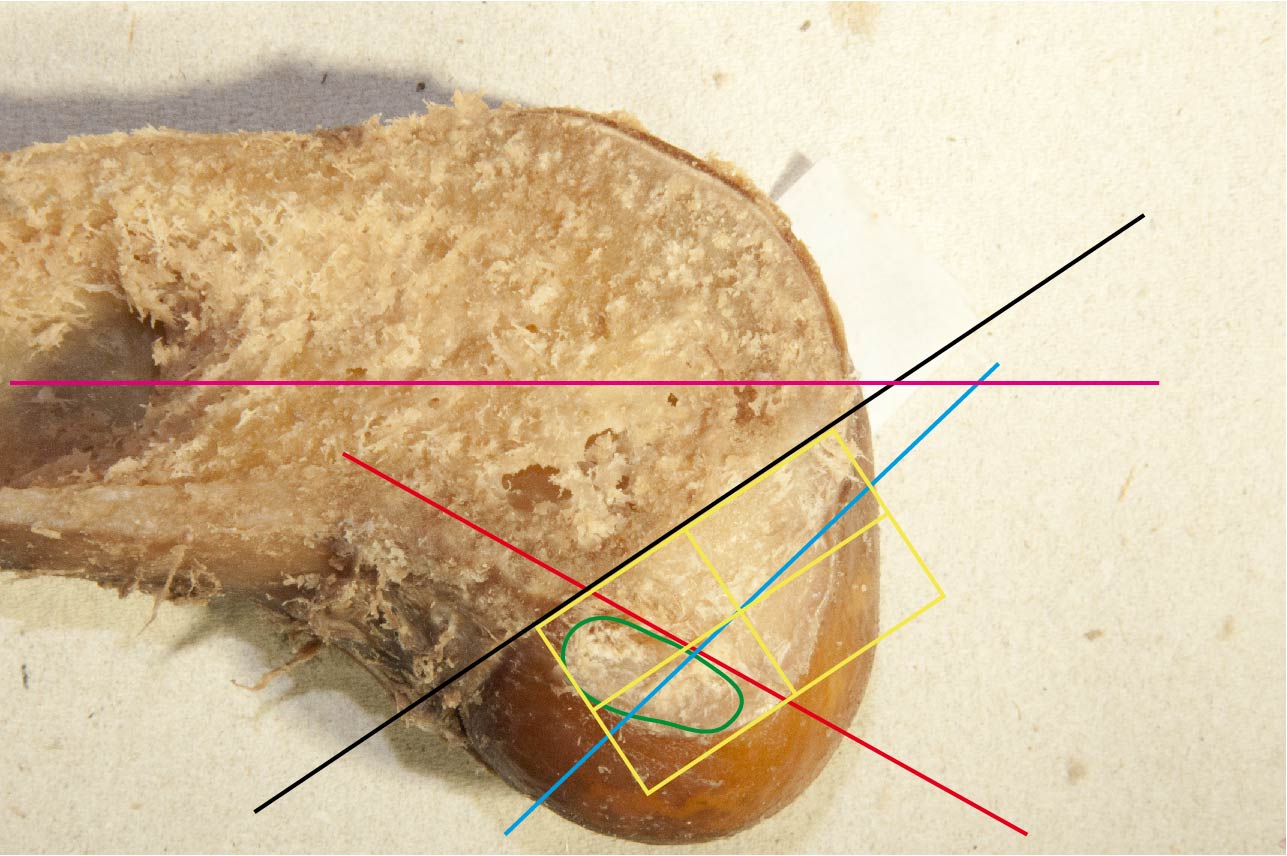15th ESSKA-Congress Geneva, CH: The femoral footprint of the ACL and its osseous landmarks#
Gabriel S. (Austria), Fischmeister M., Tschabitscher M., Hirtler Lena

Objectives:#
The anterior cruciate ligament (ACL) is a key element of the knee and frequently subject to surgical reconstruction. To guide such a procedure, various landmarks of the femoral origin have been reported, such as the lateral intercodylar ridge, also known as resident’s ridge, and the lateral bifurcate ridge (LBR). Subject of this study was to determine the prevalence of the LBR in human cadaveric femurs.
Methods:#
The approval by the ethics commission was obtained. In total 235 cadaveric femurs were examined. In part A of this study 166 specimens were acquired from the collection of a Museum of Nature which originated from various ossuaries throughout the country. In part B 69 femurs originated from our anatomic institution. 1 specimen from group B had to be excluded due to extensive deterioration. In both groups the origin of the ACL was photographed under standardized conditions. A commercially available digital single-lens reflex camera was mounted on a tripod and placed in a defined distance of the specimen. In group A the camera and in group B the specimen was tilted by 30° in the horizontal plane to provide an orthogonal view to the center of the origin of the ACL. On this photographs the origin and its bony landmarks were identified by two independent investigators. Consecutively all structures were marked in the picture using Adobe illustrator™ software. A grid based on Blumensaat´s line was placed and measurements regarding its length and width within this grid as well as the area in two-dimensional projection were taken using the ImageJ™ software. Additionally the shape of the footprint has been categorized into 7 (A) and 8 (B) predefined categories. The collected data has been analyzed using the R™ statistical software package.
Results:#
In group A the LBR could be found in only 24.7% and in group B in 13.2% of the cases. The LIR was present in 97.9% and 85.3% respectively. The area of origin in groups A and B was 127.21 ± 32.54 mm² and 119.58 ± 34.84 mm², the length 16.98 ± 2.67 mm and 12.44 ± 2,81 mm and the width 12.58 ± 2.10 mm and 14.51 ± 2.09 mm respectively. Concerning the form and angles between the bony structures a high degree of variability has been observed.
Conclusion:#
The LBR can not be recommended to be routinely used as a landmark during ACL surgery due to its lack of prevalence. Other structures like the LIR seem to be more of help. Follow up studies concerning factors of prevalence of the LBR are advised. The femoral origin of the ACL shows high variability regarding its dimensions, area, form and prevalence of bony structures.